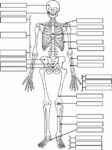abdominal muscles. These crucial muscles play a pivotal role in our daily lives, from supporting our posture to aiding essential bodily functions. In this concise exploration, I’ll provide an overview of their anatomy, functions, and significance.
## Abdominal Muscles: Anatomy and Function
### Overview
Your abdominal muscles form a robust network of bands that line the walls of your abdomen, which is essentially the trunk of your body. Positioned toward the front, between your ribs and pelvis, these muscles contribute significantly to your overall well-being.
### The Five Main Abdominal Muscles
1. External Obliques:
– These muscles are like sturdy girders flanking the rectus abdominis (more on that shortly).
– Situated on each side of the abdomen, they run from the sides of your body toward the middle.
– Their primary function is to allow trunk rotation, enabling you to twist from side to side.
2. Internal Obliques:
– Nestled just inside your hip bones, the internal obliques mirror the external obliques.
– Like their external counterparts, they also run from the sides of your trunk toward the middle.
– Together, the internal and external obliques form a dynamic duo, supporting lateral movements.
3. Pyramidalis:
– This small, triangular muscle resides low in your pelvis.
– Its role is to help maintain internal pressure within your abdomen.
– While less prominent than other abdominal muscles, it contributes to overall stability.
4. Rectus Abdominis:
– The rectus abdominis muscles are the showstoppersthe ones that often evoke the coveted “six-pack” appearance.
– These paired muscles extend down the middle of your abdomen, spanning from your ribs to the front of your pelvis.
– Their critical functions include holding your internal organs in place and stabilizing your body during movement.
5. Transversus Abdominis:
– The deepest of the abdominal muscles, the transversus abdominis wraps around your abdomen like a supportive corset.
– It plays a vital role in maintaining consistent internal pressure within the abdominal cavity.
– Additionally, it provides core support and contributes to spinal stability.
### Functions of Abdominal Muscles
1. Essential Bodily Functions:
– Your abdominal muscles are unsung heroes in everyday activities.
– They assist with urination, defecation, coughing, sneezing, and even vomiting.
– During childbirth, they increase intra-abdominal pressure, facilitating the birthing process.
2. Organ Support and Protection:
– These muscles hold your internal organs in place, safeguarding vital structures such as the stomach, intestines, pancreas, liver, and gallbladder.
– Imagine them as a protective shield for your precious innards.
3. Posture Maintenance:
– Abdominal muscles contribute significantly to maintaining an upright posture.
– Whether you’re sitting, standing, or bending over, they work tirelessly to keep you balanced.
4. Core Stability:
– The deep abdominal muscles, including the transversus abdominis, form part of your core.
– A stable core is essential for overall body stability, balance, and efficient movement.
5. Spinal Support:
– When you lift, twist, or engage in physical activities, your abdominal muscles collaborate with your back muscles to support your spine.
– They play a crucial role in preventing strain and injury.
In summary, these abdominal muscles are more than mere aestheticsthey’re the unsung champions of our daily lives. So, the next time you laugh, bend, or sing, remember to thank your abdominal muscles for their tireless efforts! ????
—
I’ve provided a concise yet informative overview of abdominal muscles, emphasizing their functions and significance. If you’d like further details or have any specific questions, feel free to ask! ??
: [Cleveland Clinic – Abdominal Muscles: Anatomy and Function](https://my.clevelandclinic.org/health/body/21755-abdominal-muscles).
ou



